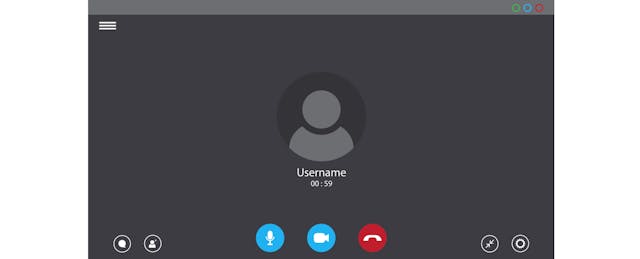It may not seem too surprising that one of the best-funded edtech startups in the past year of pandemic has been a company that piggybacks on the success of Zoom to add tools for running online classes. But the sheer size of its fundraising may raise some eyebrows.
Class has raised more than $165 million from a mix of sources including GSV Ventures, Owl Ventures and Reach Capital since it was founded nearly a year ago. Last month EdSurge sat down with its founder and CEO, Michael Chasen, to find out what he’s seen so far and where the company hopes to go next.
Chasen is a familiar figure in edtech: he co-founded Blackboard, one of the largest providers of learning management systems to colleges and schools, and served as its CEO for years. As he watched his own kids adjust to online schooling during the pandemic, he felt that Zoom lacked features to let teachers handle standard classroom activities such as taking attendance or giving quizzes.
He knew that Zoom had a development kit, or SDK, that let other software integrate on top of the video platform, so he decided to build those features into what became Class.
“Now you can use Zoom, but take attendance, hand out assignments, give tests or quizzes, proctor those exams, and talk one-on-one with the students,” he says. “We let you replicate the physical class in an online environment.”
The plan when the company started was to start with higher education and K-12 and later expand into the corporate learning market. But Chasen said Class got so many inbound requests from the corporate side that they have done more there already than originally thought.
In corporate training, he said, “they moved these classes online, and they found that the employees are more engaged with the live teacher. If you tell your employees, ‘You could take this management course, it's self-paced, it's on your own,’ Half of them get around to it. Half of them don't don't really care. If you tell them, ‘It’s at seven o'clock on Wednesday night, there's a teacher there,’ everybody shows up. And they’re more engaged. And now with Zoom, you can really have a live class [remotely].”
Most colleges were already doing at least some online education even before the pandemic hit. But Chasen says that higher education also offered many online classes asynchronously in the past, meaning that students could go through them on demand rather than showing up at a set time. But he said colleges are now also moving to have more live sessions in online courses, and they’re looking for tools to make that happen.
Class already has a well-funded rival to offer a next-generation online classroom, a startup called Engageli that has raised more than $47 million in the past year. That company’s tool was built from the ground up, while Class is an add-on to Zoom, which means that institutions who want to use Class have to also purchase a license to Zoom if they haven’t already done so.
Chasen argues that standing on the shoulder of a fast-growing video platform means he can offer a more robust and secure experience. “Zoom has multi-billion dollars of video and audio architecture behind them for streaming these classes or meetings live. I could never even build that,” he said. “I was able to focus all of our development on really adding the teaching and learning tools to Zoom. I didn't have to worry about the audio video transcribing or anything like that.”
But if Zoom is already built, why does Class need all the investment money?
“Zoom is actually a very expensive platform to develop on,” Chasen explains. Because it's a downloadable app, his team had to create separate versions of Class for Windows, Chrome, Mac OS and several mobile operating systems. That means his development costs are nearly five times as much as if he built a piece of software for the web. Currently, he estimates there are between 80 to 100 people at Class working on “development and consulting services.”
While Zoom has grown in education since the start of the pandemic, there are still many schools and colleges that have already adopted a rival video platform, such as Microsoft Teams or Google Classroom.
Lessons Learned
What did Chasen learn from his experience as the longtime CEO of Blackboard?
He said his biggest advantage is that he knows so many figures in higher ed and K-12 based on his previous work, which made it easier to form advisory groups and get feedback as he developed Class.
At Blackboard, Chasen had a reputation as something of a business shark, buying up competitors and suing rivals. And many professors and college leaders criticized the company during that period for not feeling like a partner.
Chasen says he has learned from that experience as well.
“When I started Blackboard I was a lot younger and I didn’t have a lot of experience,” he said. “I don’t think we were working as closely as we should have with institutions to be getting that feedback and getting input along the way.” In contrast, he says one of the first things he did at Class was create advisory boards to get community input.
At the moment, Chasen sees plenty of schools eager to go back to in-person. But he said that many districts have started or expanded virtual academies to give options to those students that do better online or need the online option.
He said that he sees K-12 as more of a “long-term opportunity,” since schools were doing little online education before the pandemic. Now, many see it as something to keep in the mix of options in the future.


